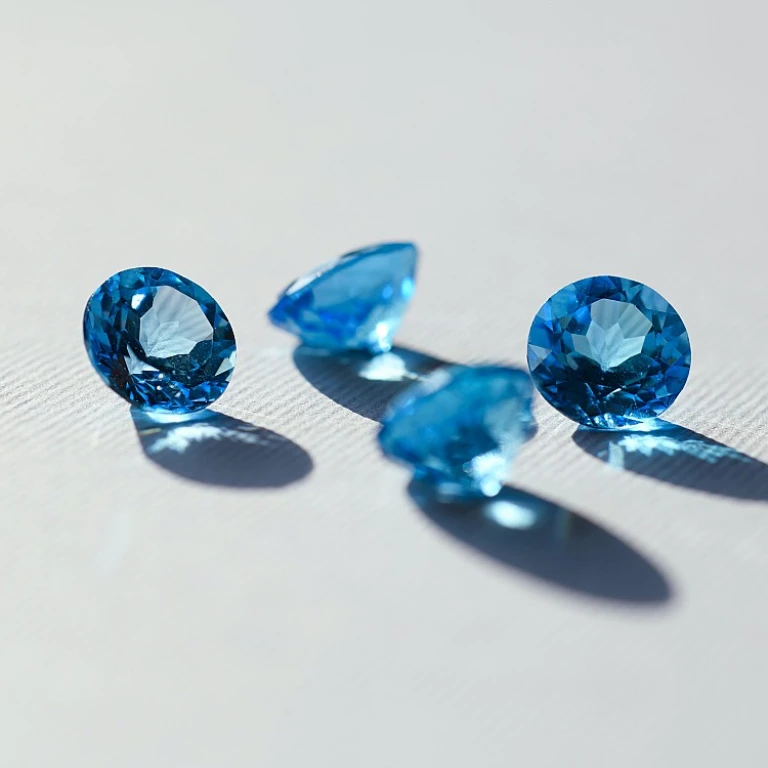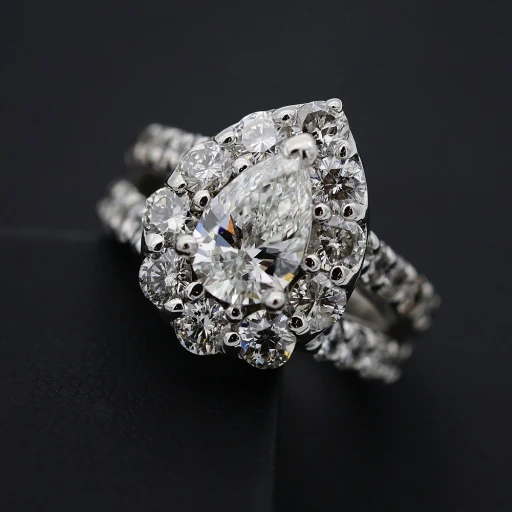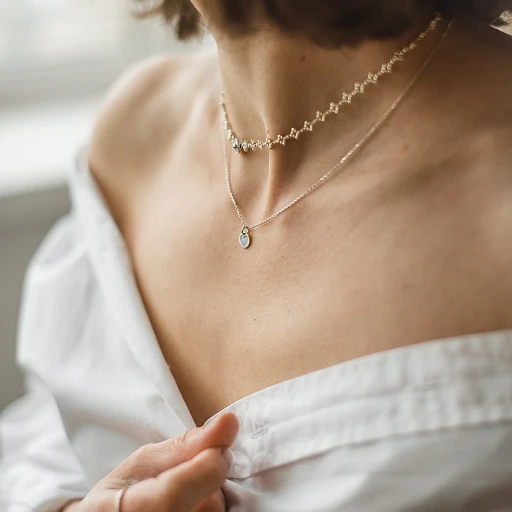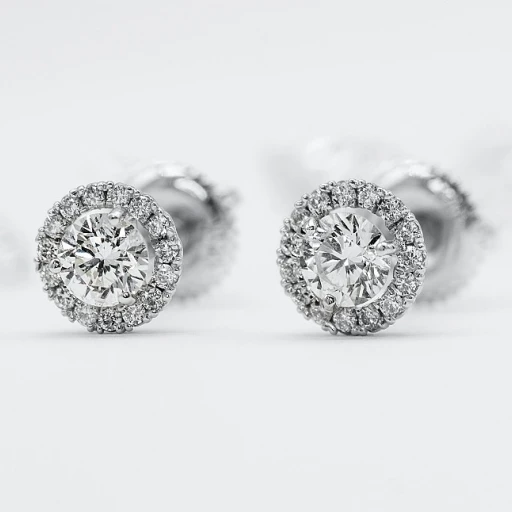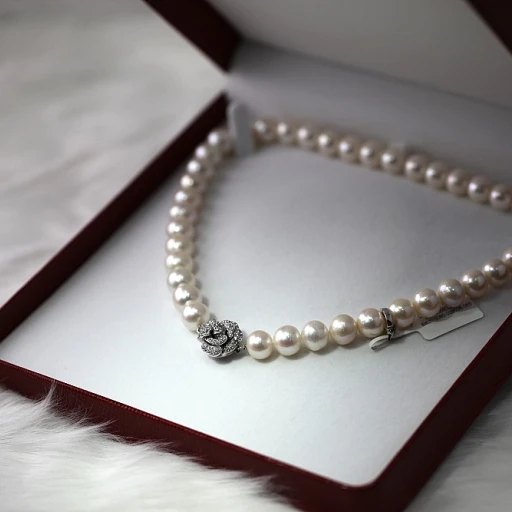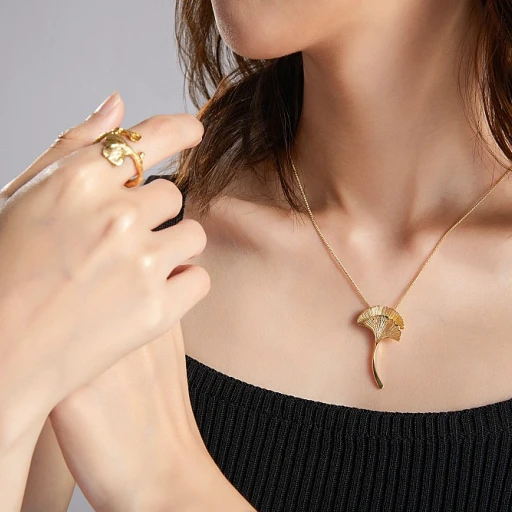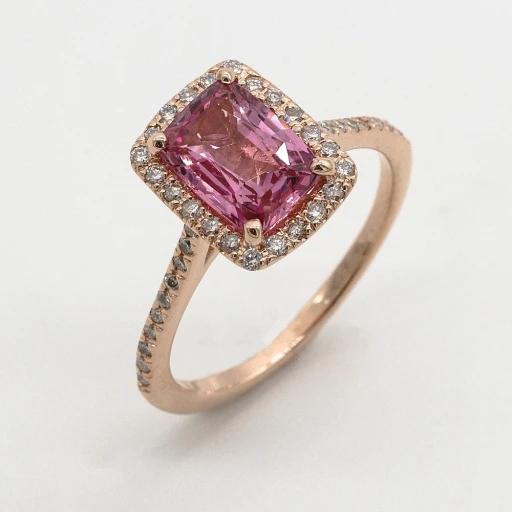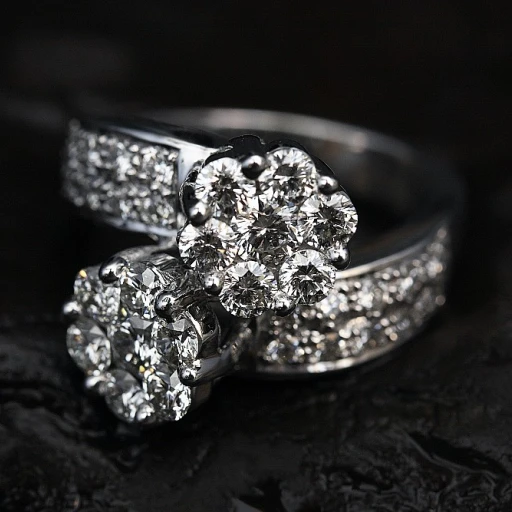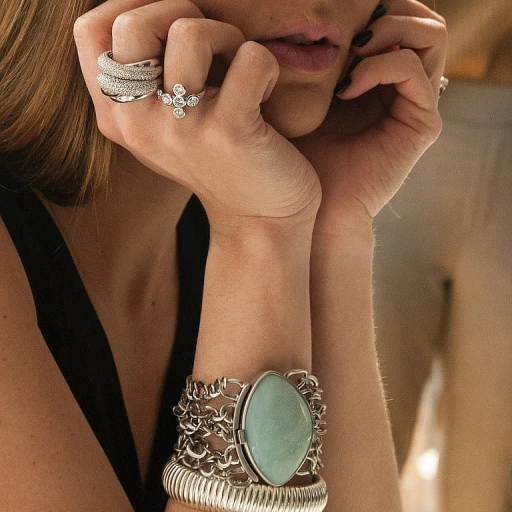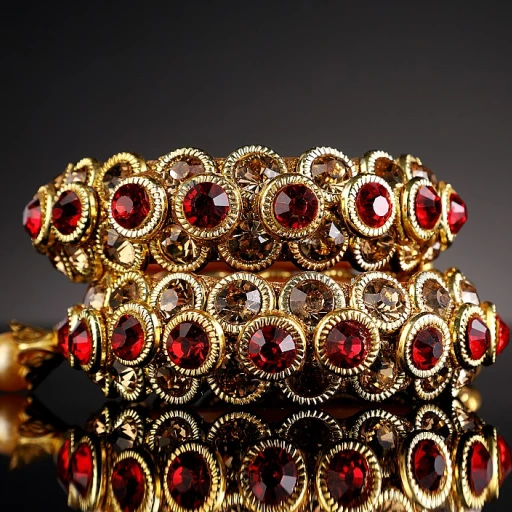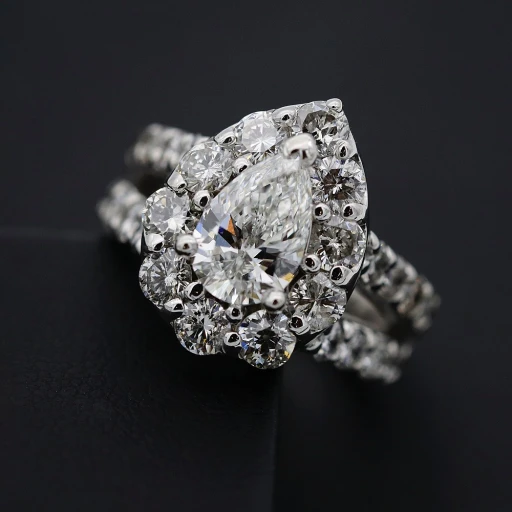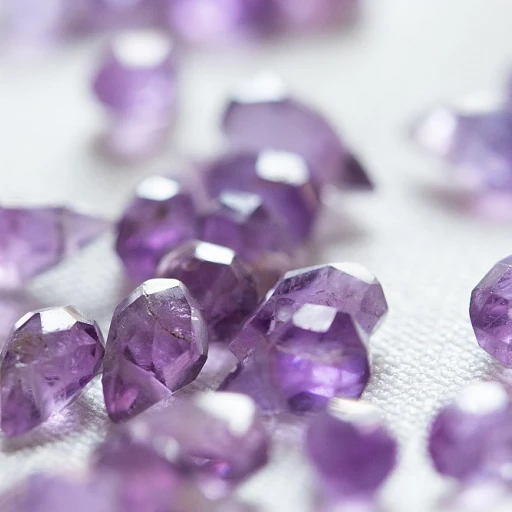
Understanding the Emerald Cut
Decoding the Emerald-Cut Diamond
The emerald-cut diamond is a symbol of elegance and sophistication. Unlike the more common round cut, the emerald cut features stepped facets and a rectangular shape, giving it a distinct vintage appeal. This classic design has gained popularity in various types of jewelry, especially in diamond rings, making it a timeless choice for those seeking a unique style. When comparing the emerald cut to other cuts, its elongated shape and clean lines showcase the natural clarity and quality of the diamond. While some may prefer the brilliance of a round cut, the emerald cut diamond offers a subtle sparkle that draws attention to its clarity and color, particularly in engagement rings. The process of creating an emerald-cut diamond involves careful considerations beyond the usual cut diamond evaluations. Whether it is a natural diamond or a lab-grown diamond, each step in crafting this elegant shape requires precision to ensure that the facets create a hall-of-mirrors effect, enhancing its sparkle. In terms of carat, a 2-carat emerald-cut diamond stands out, providing a perfect balance between size and elegance. It's essential to understand that a larger carat doesn't always equal better; evaluating the quality involves looking into aspects such as the cut, color, and clarity. These elements are crucial in ensuring the diamond's beauty and value. For those interested in exploring this exquisite cut in more detail, our article on the allure of the emerald band provides further insights into why this cut is a favorite among jewelry enthusiasts.The Significance of Carat Weight
Delving into the Importance of Carat Weight
When discussing diamonds, the term 'carat weight' often becomes a focal point, representing not just the diamond's size but also influencing the price tag associated with it. A 2-carat emerald-cut diamond distinguishes itself prominently, becoming a statement piece in both engagement rings and other jewelry forms.
Carat weight holds a significant position in the overall valuation and allure of a diamond. With an increase in carat weight, the diamond not only appears larger but also tends to capture more light, provided the cut quality complements it. This becomes especially crucial for an emerald-cut diamond, where clarity and precision in facets play an essential role in showcasing the diamond's allure.
Investing in a 2-carat diamond means ensuring that it delivers visual impact, comparable to its weight. Unlike other cuts, the emerald cut accentuates clarity due to its rectangular facets, meaning both natural diamonds and lab-grown diamonds should balance carat weight with clarity and color for optimum brilliance.
When selecting a 2-carat emerald-cut diamond, decide between natural diamond options or the increasingly popular lab-grown diamonds. Both offer unique appeals, yet a lab-grown emerald diamond can sometimes provide a more budget-friendly option without compromising on visual beauty.
The choice of metal, such as white gold or yellow gold, alongside your diamond, can further highlight the carat's significance. White gold settings enhance the diamond's clarity, while yellow gold settings offer a classic contrast, enriching the diamond's sparkle.
Evaluating Quality Beyond Carat
Quality Considerations Beyond the Number
When it comes to evaluating the splendor of a 2-carat emerald-cut diamond, the magic isn’t just in the carat number. To truly appreciate the value and aesthetics of this gemstone, scrutiny of its quality beyond carat weight is essential. The natural diamonds and even lab-grown diamonds, whether set in elegant white gold or classic yellow gold, must be evaluated for clarity, cut, and color.
One key factor to consider is the clarity of the stone. Emerald cuts are renowned for their open facets, which readily exhibit any inclusions or blemishes, making clarity an important consideration. A high clarity rating ensures that the diamond remains dazzling and will likely fetch a higher price sale compared to counterparts with visible inclusions.
Next, attention must be given to the cut of the diamond. The cut does not merely refer to the shape but the proportions, symmetry, and overall finish. A precisely cut diamond enhances the reflection of light through its facets, a critical quality for maximizing the stone's brilliance. It’s important to compare the gradations of these factors to understand their impact on the overall visual appeal and value of the diamond ring.
Color is another vital attribute. White diamonds, for instance, are graded on a scale from D (colorless) to Z (noticeable color). Typically, a diamond engagement ring that features an emerald-cut diamond in the colorless to near-colorless range is preferred for its higher regular price and desirability.
For more nuanced insight, gemstone certification such as IGI, which evaluates these characteristics, can serve as a guide in understanding the diamond's true worth. Such factors play a significant role not only in daily wearability but also in influencing the investment potential of a diamond, whether it be natural or lab-grown. The allure of such stones doesn’t only lie in their elegance; they become a piece of heritage, potentially appreciated over time.
While the carat weight indeed draws attention to the stones under consideration, understanding and evaluating quality metrics beyond carat ensures an informed purchase and enduring satisfaction with your investment. To explore further how these factors influence fine jewelry allure, check out our detailed exploration of Pink Diamonds in fine jewelry.
Investment Potential of a 2-Carat Emerald-Cut Diamond
Assessing the Investment Prospects
Investing in a 2-carat emerald-cut diamond involves more than merely selecting an exquisite gem. One must comprehend the investment potential these precious stones encapsulate. Whether your diamond is a natural or lab-grown, you may anticipate distinct influences in terms of resale value and market demand.- Market Trends and Price Dynamics: The price of diamonds, irrespective of their origin, can experience fluctuations based on factors like market demand, rarity, and economic conditions. Notably, natural diamonds have historically shown a steady appreciation, particularly those with higher carat weights like a 2-carat piece. Besides, the unique elegance of the emerald cut can enhance its value over time. Despite this, lab-grown diamonds have gained traction for their sustainable allure, demonstrating potential as markets evolve.
- Comparing Natural and Lab-Grown Diamonds: When deliberating between diamonds, it's vital to evaluate both natural and lab-grown options. While natural diamonds often command higher prices due to their rarity and historical significance, lab-grown diamonds offer a budget-friendly choice without compromising on brilliance. Such considerations significantly impact the engagement ring sector, where budget-conscious buyers now compare these options before committing.
- Condition and Clarity Considerations: Beyond carat weight, the overall condition of your diamond, demonstrated through its cut, clarity, and color, contributes to its market value. A well-cut diamond with superior clarity will inherently hold more appeal, whether it's set in white gold, yellow gold, or any other chosen metal. Regular maintenance and protection can maintain the diamond's pristine condition, prolonging its investment potential.
Styling and Setting Options
Customization and Versatility
When it comes to styling your 2-carat emerald-cut diamond, the ring setting plays a pivotal role. Whether you prefer the classic elegance of a solitaire or the additional sparkle of a halo setting, there's an array of options to suit your taste. Each setting not only enhances the beauty of the diamond but also complements the wearer's personal style.
Classic Solitaire
The solitaire setting is a time-honored choice for boldly displaying an emerald-cut diamond. It ensures the clarity and cut take center stage. Opt for a white gold or yellow gold band to accentuate the stone's brilliance. This setting complements both natural and lab-grown diamonds, offering a timeless beauty that never goes out of style.
Halo and Pavé Settings
If you're drawn to a touch more sparkle, consider a halo or pavé setting. These options encircle your 2-carat emerald-cut diamond with smaller diamonds, enhancing its size and brilliance. Halo and pavé settings are often seen in both yellow gold and white gold, allowing you to compare aesthetics and choose which best suits your preference.
Three-Stone and Tension Settings
Three-stone settings offer a romantic narrative, symbolizing the past, present, and future. This setting offers a unique aesthetic, allowing for an interplay of clarity and color, particularly when combining different diamond shapes and carats. Tension settings, on the other hand, provide a modern twist by securely holding the diamond in place with metal pressure. This daring setting gives the impression of a floating diamond, perfect for contemporary taste.
Mixing Metals
An exciting trend is mixing metals to create a modern and personalized ring. Combining white gold with yellow gold can provide a unique contrast that highlights the diamond's sparkle. The combination of metals adds versatility, ensuring your engagement ring pairs well with other jewelry, regardless of whether they're natural diamonds or grown diamonds.
Personal Touch
Consider custom engravings for an extra layer of personalization. Whether it's your initials, a special date, or a meaningful phrase, engravings transform your emerald-cut diamond ring into a cherished heirloom.
The beauty of styling a 2-carat emerald-cut diamond is the freedom it offers to express individuality while maintaining its luxurious elegance. From the selection of metal to the intricacies of the setting, each choice contributes to a ring that’s uniquely yours, whether crafted from natural diamonds or lab-grown jewels.
Caring for Your Emerald-Cut Diamond
Nurturing Your Emerald-Cut Treasure
Caring for your 2-carat emerald-cut diamond is paramount to maintaining its dazzling allure and value. Here are some essential tips to ensure your gem continues to sparkle like the day you acquired it:- Routine Cleaning: Over time, dirt and oil from regular wear can diminish the brilliance of your diamond. Gently clean your diamond ring in a mild soap and warm water solution. Using a soft toothbrush, focus on reaching the crevices to remove any accumulated grime.
- Professional Inspections: Regular professional inspections are crucial. A skilled jeweler can ensure that the prongs and settings are secure, preventing damage. This is especially important in both natural and lab grown diamonds, as loose settings can lead to tragic losses.
- Proper Storage: When not worn, store your diamond separately from other jewelry pieces to prevent scratching. Velvet-lined jewelry boxes or a soft pouch can protect your precious gem from abrasions.
- Avoid Harsh Chemicals: Keep your diamond away from harsh chemicals found in household cleaning agents. Such substances can erode the metal setting, particularly in white gold or yellow gold rings, leading to costly repairs.
- Consider Insurance: The investment potential of a 2-carat emerald-cut diamond makes insurance a wise decision. Whether your ring is adorned with natural diamonds or lab grown diamonds, safeguarding it against potential loss or damage provides peace of mind.
